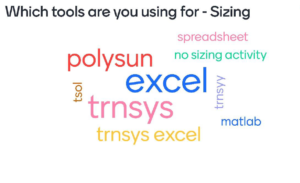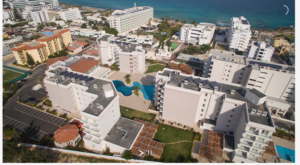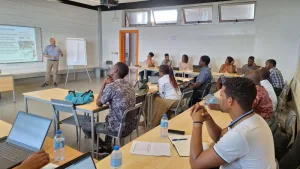

Europe: Which Path Takes the Small-capacity Sorption Cooling Industry?
 Whereas the global market for chillers with small cooling capacities has a volume of around 70 million units annually, the European industry of small-capacity sorption cooling is still in its infancy and is facing many challenges. A newly published study, “Scenario Planning for the European Small Capacity Sorption Cooling Industry”, has identified four different ways the industry could take in a sector whose future development is still hard to predict and depends on several unknowns. The study also helps with strategic recommendations on how the European industry can prepare itself for the possible future in each of these scenarios. The photo shows a selection of small-capacity solar chillers.
Whereas the global market for chillers with small cooling capacities has a volume of around 70 million units annually, the European industry of small-capacity sorption cooling is still in its infancy and is facing many challenges. A newly published study, “Scenario Planning for the European Small Capacity Sorption Cooling Industry”, has identified four different ways the industry could take in a sector whose future development is still hard to predict and depends on several unknowns. The study also helps with strategic recommendations on how the European industry can prepare itself for the possible future in each of these scenarios. The photo shows a selection of small-capacity solar chillers.
Source: Presentation Green Chiller at ESTEC 2011
The study was carried out by Dr Jörg Rupp while working on his MBA master thesis at the Leipzig Graduate School of Management, Germany. “The study deals with the future of the small-capacity European sorption cooling industry, which has so far been the main driver behind solar cooling growth,” explains the study’s author. “Considering the number of installations, these companies have contributed the most to solar cooling.” It means that the development in the solar cooling sector strongly depends on the future outlook of the small-scale European sorption cooling industry.
The four scenarios – all with a five-year forecast – are “Green Chiller” and “Snow Storm” with promising financial support, as well as “Freeze” and “Ice Desert” with a poor regulatory framework:
- Green Chiller describes a scenario in which changes in the political environment lead to incentive programmes across the entire renewable sector. Sorption cooling develops rapidly. Being busy with their cash cows, larger players stay out of the small-capacity cooling market.
- In the scenario Snow Storm, favourable incentives for sorption cooling lead to a massive increase in market competition.
- Freeze describes the worst-case scenario in the eyes of the European sorption cooling industry. Large Asian industry players take over the remaining market, which stagnates because of the improved performance of competing technologies and a poor regulatory framework.
- In the Ice desert scenario, the regulatory environment and competition develop poorly, which results in a slow growth of the sorption cooling market.
Besides sharing common characteristics independent of any framework conditions, each scenario comes with its own individual recommendations and an action list on how to meet the challenges ahead.
The study can be bought for the price of 44 Euros by sending an email to joerg.rupp@dorucon.de – or online at Amazon.


